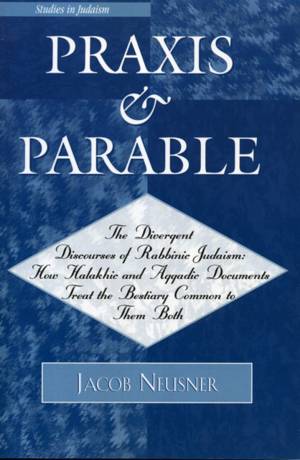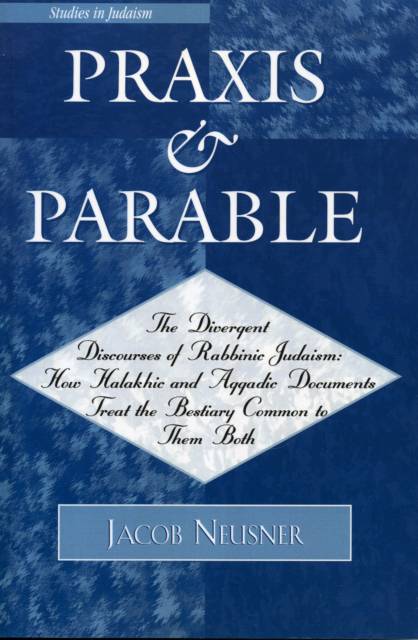
Bedankt voor het vertrouwen het afgelopen jaar! Om jou te bedanken bieden we GRATIS verzending (in België) aan op alles gedurende de hele maand januari.
- Afhalen na 1 uur in een winkel met voorraad
- In januari gratis thuislevering in België
- Ruim aanbod met 7 miljoen producten
Bedankt voor het vertrouwen het afgelopen jaar! Om jou te bedanken bieden we GRATIS verzending (in België) aan op alles gedurende de hele maand januari.
- Afhalen na 1 uur in een winkel met voorraad
- In januari gratis thuislevering in België
- Ruim aanbod met 7 miljoen producten
Zoeken
€ 108,45
+ 216 punten
Omschrijving
Judaism's two native categories, narrative theology and law (also known as parable and praxis or Aggadah and Halakhah) form two distinct modes of discourse. The one expounds norms of attitude and belief, the other, norms of action and behavior. Each possesses its own modes of thought, topical program, and medium for expression. Joined together, they create a remarkably coherent statement. Any understanding of Rabbinic Judaism depends on a theory of how these two modes of thought and expression relate to form a single cogent system. Praxis and Parable explores how a single topic "the morality and law of the animal kingdom" produces two distinct vocabularies of analysis in the Rabbinic canon.
Specificaties
Betrokkenen
- Auteur(s):
- Uitgeverij:
Inhoud
- Aantal bladzijden:
- 296
- Taal:
- Engels
- Reeks:
- Reeksnummer:
- nr. 174
Eigenschappen
- Productcode (EAN):
- 9780761833406
- Verschijningsdatum:
- 10/11/2005
- Uitvoering:
- Paperback
- Formaat:
- Trade paperback (VS)
- Afmetingen:
- 152 mm x 229 mm
- Gewicht:
- 435 g

Alleen bij Standaard Boekhandel
+ 216 punten op je klantenkaart van Standaard Boekhandel
Beoordelingen
We publiceren alleen reviews die voldoen aan de voorwaarden voor reviews. Bekijk onze voorwaarden voor reviews.









